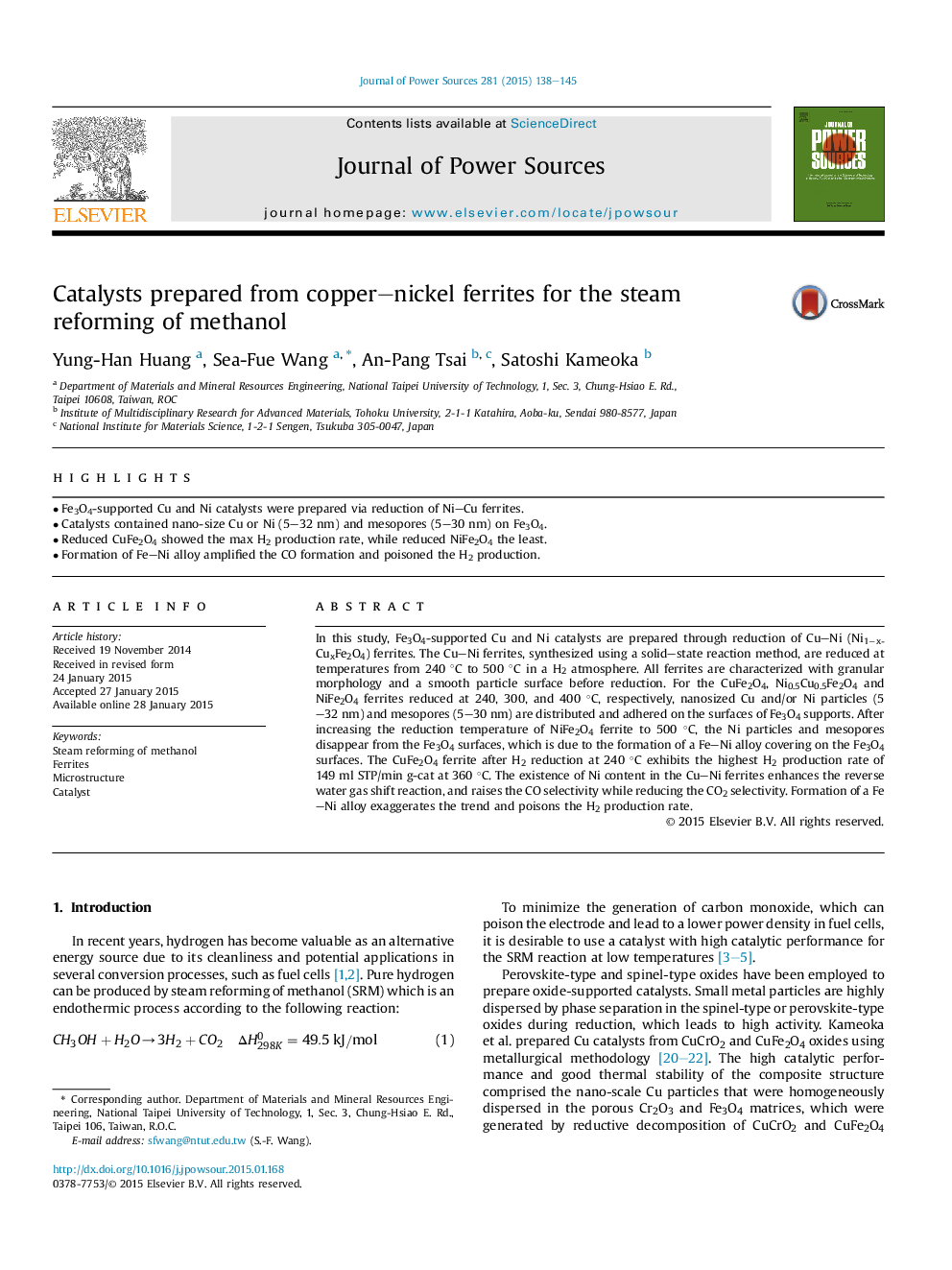| کد مقاله | کد نشریه | سال انتشار | مقاله انگلیسی | نسخه تمام متن |
|---|---|---|---|---|
| 1286281 | 1497951 | 2015 | 8 صفحه PDF | دانلود رایگان |
• Fe3O4-supported Cu and Ni catalysts were prepared via reduction of Ni–Cu ferrites.
• Catalysts contained nano-size Cu or Ni (5–32 nm) and mesopores (5–30 nm) on Fe3O4.
• Reduced CuFe2O4 showed the max H2 production rate, while reduced NiFe2O4 the least.
• Formation of Fe–Ni alloy amplified the CO formation and poisoned the H2 production.
In this study, Fe3O4-supported Cu and Ni catalysts are prepared through reduction of Cu–Ni (Ni1−xCuxFe2O4) ferrites. The Cu–Ni ferrites, synthesized using a solid–state reaction method, are reduced at temperatures from 240 °C to 500 °C in a H2 atmosphere. All ferrites are characterized with granular morphology and a smooth particle surface before reduction. For the CuFe2O4, Ni0.5Cu0.5Fe2O4 and NiFe2O4 ferrites reduced at 240, 300, and 400 °C, respectively, nanosized Cu and/or Ni particles (5–32 nm) and mesopores (5–30 nm) are distributed and adhered on the surfaces of Fe3O4 supports. After increasing the reduction temperature of NiFe2O4 ferrite to 500 °C, the Ni particles and mesopores disappear from the Fe3O4 surfaces, which is due to the formation of a Fe–Ni alloy covering on the Fe3O4 surfaces. The CuFe2O4 ferrite after H2 reduction at 240 °C exhibits the highest H2 production rate of 149 ml STP/min g-cat at 360 °C. The existence of Ni content in the Cu–Ni ferrites enhances the reverse water gas shift reaction, and raises the CO selectivity while reducing the CO2 selectivity. Formation of a Fe–Ni alloy exaggerates the trend and poisons the H2 production rate.
Journal: Journal of Power Sources - Volume 281, 1 May 2015, Pages 138–145
